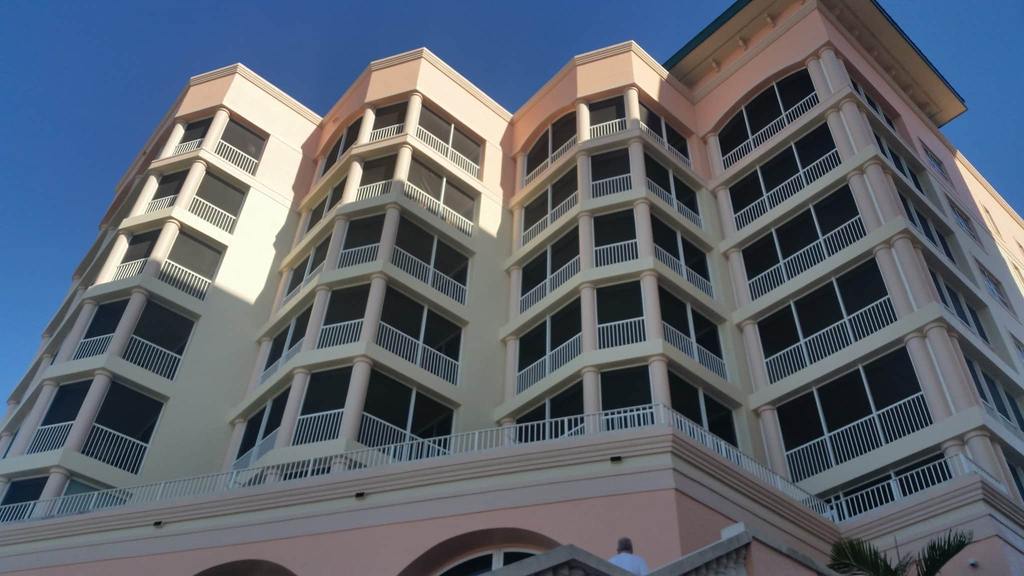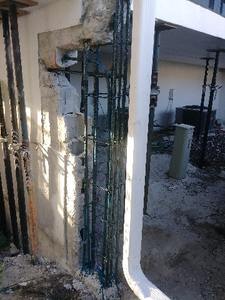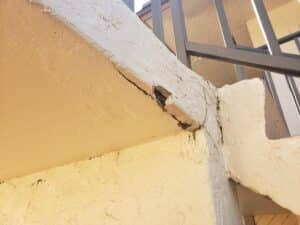In the realm of property maintenance, preserving the structural integrity and aesthetic appeal of concrete and stucco is paramount. These durable materials often grace the exteriors of residential and commercial buildings, but time and environmental factors can take their toll. Enter concrete and stucco restoration—a comprehensive solution that rejuvenates these surfaces, enhancing their resilience and visual charm.
Imagine transforming dull, weathered concrete into a vibrant canvas, restoring the original luster of stucco facades. Beyond aesthetics, restoration ensures the structural soundness of buildings, protecting against water damage, cracks, and other signs of deterioration. It’s a win-win situation that elevates the overall value and curb appeal of any property.
That’s why we’ll explore the multifaceted world of concrete and stucco restoration. We’ll delve into the causes of deterioration, the latest restoration techniques, and the benefits of investing in professional restoration services. Whether you’re a property manager, homeowner, or business owner, this guide will provide valuable insights into preserving and enhancing the beauty and longevity of your concrete and stucco surfaces.
Identifying Signs of Damage
The first step in any concrete and stucco restoration project is identifying the signs of damage and determining the underlying causes. Here are some common indications and factors that contribute to concrete and stucco deterioration:
1. Cracks: Cracks can appear on concrete or stucco surfaces due to moisture intrusion, freeze-thaw cycles, or structural movements. Small cracks can widen over time, making your exterior vulnerable to further damage and compromising its appearance.
2. Discoloration: Changes in color or the appearance of stains can result from water exposure, UV radiation, algae, or mold growth on stucco and concrete surfaces.
3. Surface Spalling: When the surface layer of concrete or stucco begins to break away or form holes, it might indicate a severe issue such as a weak substrate, salt damage, or poor installation.
Restoration Techniques
Several professional restoration techniques can effectively address various degrees of concrete and stucco damage. Here’s an overview of some common methods:
1. Patching: Repairing cracks, holes, or other minor damages on concrete or stucco surfaces can be achieved through patching. This process involves using compatible and durable materials to fill and seal the damaged areas, restoring the appearance and preventing further deterioration.
2. Pressure Washing: Pressure washing is a non-destructive cleaning method that can easily remove molds, algae, mildew, and dirt from concrete and stucco surfaces. A thorough pressure washing treatment can instantly boost your property’s curb appeal and help prepare surfaces for a fresh coat of paint or protective sealant.
3. Resurfacing: For more extensive damage or uneven surfaces, resurfacing can be a valuable option. This process involves applying a new layer of concrete or stucco to the damaged area, creating a smooth and consistent surface.
Material Choices
When taking on a restoration project, choosing the right materials is crucial for achieving optimal aesthetics and durability. Here’s a brief overview of popular material options for concrete and stucco restoration:
1. Cementitious Stucco: Traditional cementitious stucco is a mix of sand, cement, and water, providing durability, texture, and a classic appearance. This material can be tinted or painted to match your desired color scheme.
2. Synthetic Stucco: Also known as exterior insulation finishing systems (EIFS), synthetic stucco is composed of polymer-based materials and offers excellent insulation. It can be formulated to mimic the appearance of traditional stucco and other finishes, providing design flexibility and energy efficiency.
3. Concrete Repair Products: Modern concrete repair materials offer various formulations and consistencies, allowing contractors to select products specifically designed for patching, leveling, or resurfacing, depending on the nature of the damage.
Benefits of Restoration Projects
Concrete and stucco restoration projects for Condo-HOA and commercial properties can yield numerous advantages. Here are some of the key benefits:
1. Enhanced Aesthetics: Restoring concrete and stucco surfaces can significantly improve the exterior appearance of your property, contributing to a polished and well-maintained image.
2. Improved Weather Resistance: Concrete and stucco restoration helps seal and protect against harsh environmental conditions, including wind, rain, UV radiation, and temperature fluctuations, prolonging the lifespan of your building’s exterior.
3. Increased Property Value: A well-maintained property is more appealing to potential tenants or buyers, meaning that your investment in concrete and stucco restoration can potentially increase property value and occupancy rates.
Enhancing the Durability and Appeal of Concrete and Stucco for Condo-HOA and Commercial Properties
Implementing concrete and stucco restoration for your Condo-HOA or commercial property can offer both functional and aesthetic benefits, improving the building’s durability, visual appeal, and overall value. By understanding the signs of damage and selecting appropriate restoration techniques and materials, property managers can make informed decisions that result in successful restoration projects.
Our team of experienced professionals specializes in various property improvement projects, including concrete and stucco restoration in Fort Myers for Condo-HOA and commercial properties. Contact McLeod’s Contracting Solutions today to discover how we can bring new life to your property’s exterior with expert concrete and stucco restoration services.







